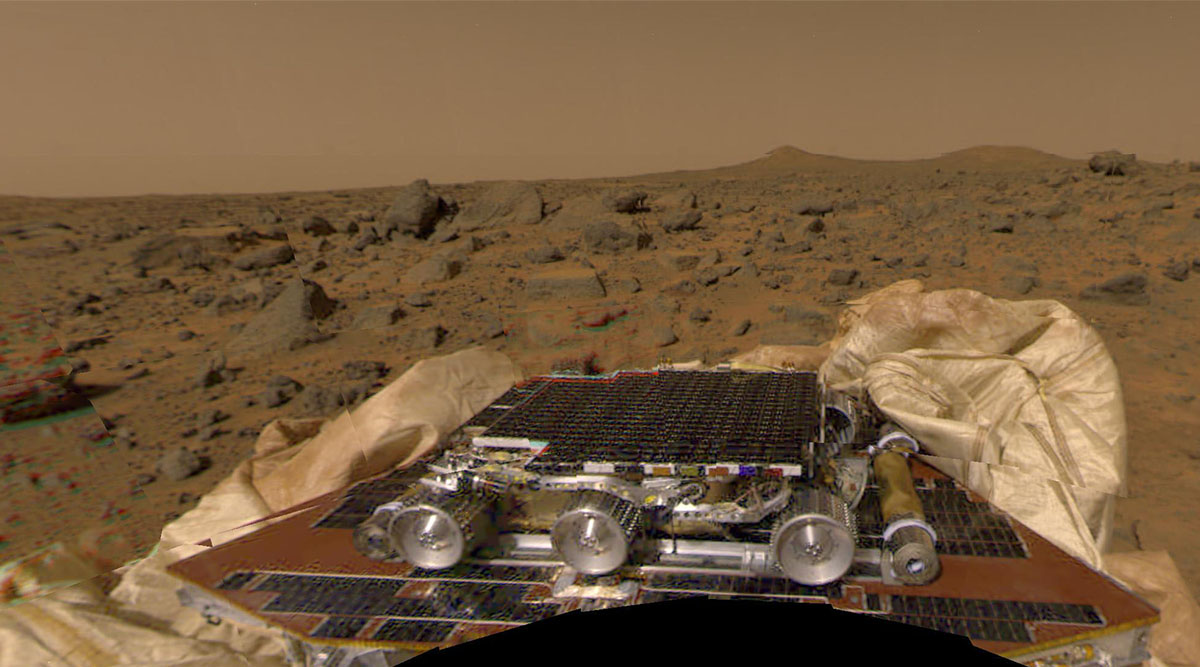NASA’s Mars Pathfinder mission was designed to demonstrate the technology required to deliver an instrument lander and a robotic rover to the surface of the planet. It was launched on December 4, 1996, and landed on Mars’ Ares Vallis seven months later on July 4, 1997. Not only did the Pathfinder mission accomplish its goal of being a technology demonstration, but it also returned lots of data.
The Mars Pathfinder mission entered the Martian atmosphere using an innovative method where the spacecraft used a parachute to slow its descent and a giant system of airbags to cushion the impact on the surface. The mission carried the Carl Sagan Memorial Station (lander) and the Sojourner Rover, both of which outlived their design lives.
They both carried scientific instruments to analyse the Martian atmosphere, climate, geology and composition of rocks and soil. From the time of landing to the date of final transmission, Mars Pathfinder returned more than 16,500 images from the lander and 550 images from the rover. They also returned chemical analyses of rocks and soil along with extensive data on winds and other weather factors. These images and data are still used by scientists studying Mars.
The findings from this data are what helped scientists conclude that Mars had a warm and wet past, with liquid water existing under a thin atmosphere. Rounded pebbles and rocks at the landing site, for example, suggested that they were formed by running water in Mars’ distant past. The mission was also able to observe water ice clouds in the lower atmosphere of the planet. Further, radio tracking provided an exact measurement of the lander’s location and Mars’ pole of rotation and information about its metallic core.
The Mars Pathfinder mission made its final transmission on September 27, 1997, after which, both the Pathfinder lander and the Sojourner rover were left behind on the surface of the red planet. But the mission’s legacy continues to contribute to and shape human space exploration and science 25 years after it successfully touched down on Mars.
!function(f,b,e,v,n,t,s)
{if(f.fbq)return;n=f.fbq=function(){n.callMethod?
n.callMethod.apply(n,arguments):n.queue.push(arguments)};
if(!f._fbq)f._fbq=n;n.push=n;n.loaded=!0;n.version=’2.0′;
n.queue=[];t=b.createElement(e);t.async=!0;
t.src=v;s=b.getElementsByTagName(e)[0];
s.parentNode.insertBefore(t,s)}(window, document,’script’,
‘https://connect.facebook.net/en_US/fbevents.js’);
fbq(‘init’, ‘444470064056909’);
fbq(‘track’, ‘PageView’);







